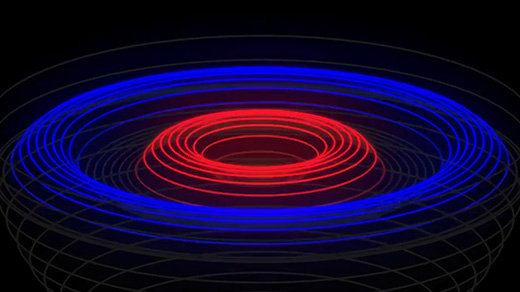What's up in
Turbulence
Latest Articles
New ‘Superdiffusion’ Proof Probes the Mysterious Math of Turbulence
Turbulence is a notoriously difficult phenomenon to study. Mathematicians are now starting to untangle it at its smallest scales.
An Injection of Chaos Solves Decades-Old Fluid Mystery
In the 1960s, drillers noticed that certain fluids would firm up if they flowed too fast. Researchers have finally explained why.
An Unexpected Twist Lights Up the Secrets of Turbulence
Having solved a central mystery about the “twirliness” of tornadoes and other types of vortices, William Irvine has set his sights on turbulence, the white whale of classical physics.
New Math Proves That a Special Kind of Space-Time Is Unstable
Einstein’s equations describe three canonical configurations of space-time. Now one of these three — important in the study of quantum gravity — has been shown to be inherently unstable.
The Map of Mathematics
Explore our surprisingly simple, absurdly ambitious and necessarily incomplete guide to the boundless mathematical universe.
Mathematicians Prove Universal Law of Turbulence
By exploiting randomness, three mathematicians have proved an elegant law that underlies the chaotic motion of turbulent systems.
Astronomers Find Black Holes Stirring Up the Biggest Galaxies
After a space telescope disintegrated, astrophysicists had little hope of understanding how supermassive black holes agitate giant galaxies. Then they invented a hack.
The Trouble With Turbulence
Turbulence is everywhere, yet it is one of the most difficult concepts for physicists to understand.
Mathematicians Tame Turbulence in Flattened Fluids
By squeezing fluids into flat sheets, researchers can get a handle on the strange ways that turbulence feeds energy into a system instead of eating it away.








